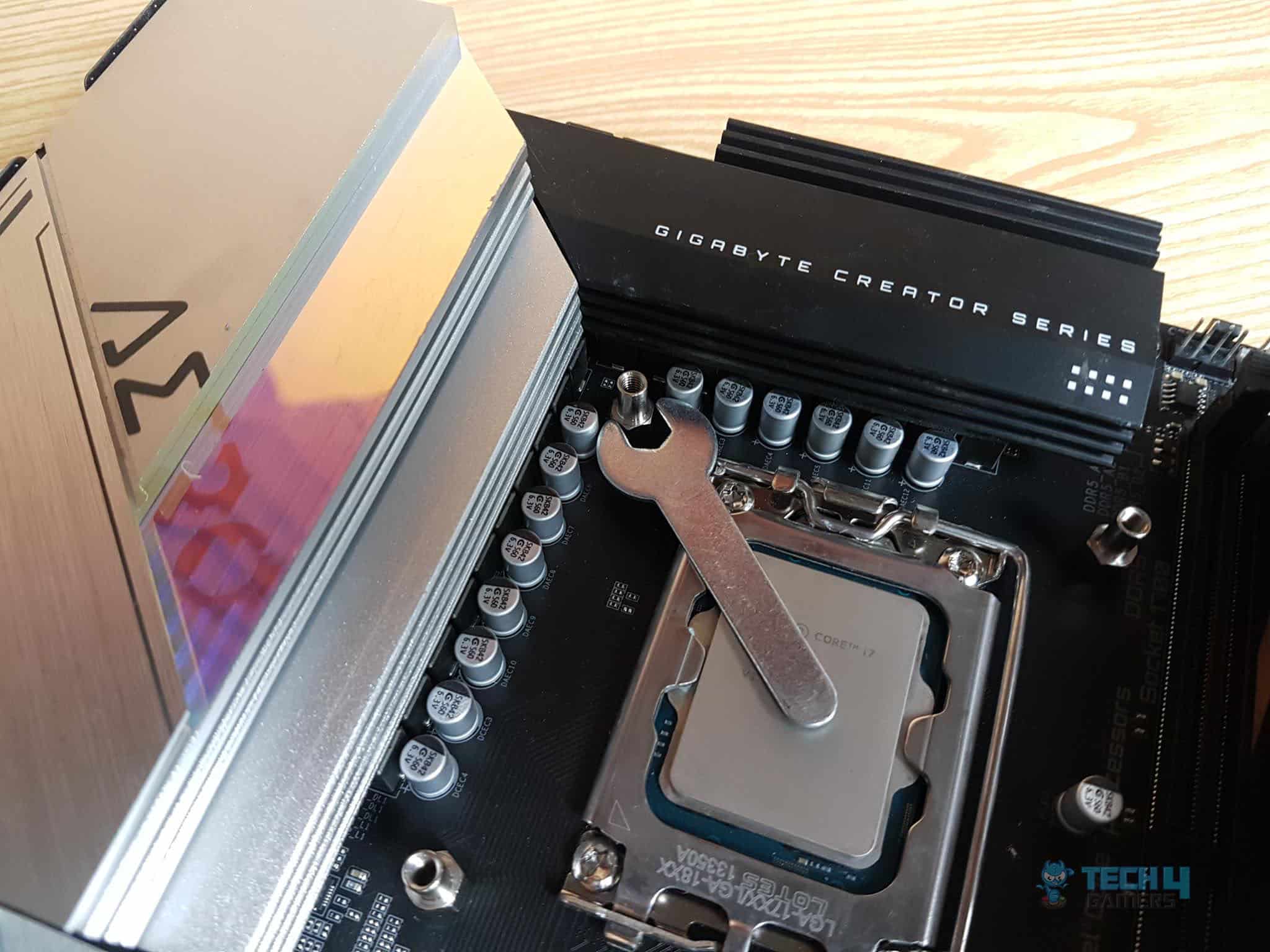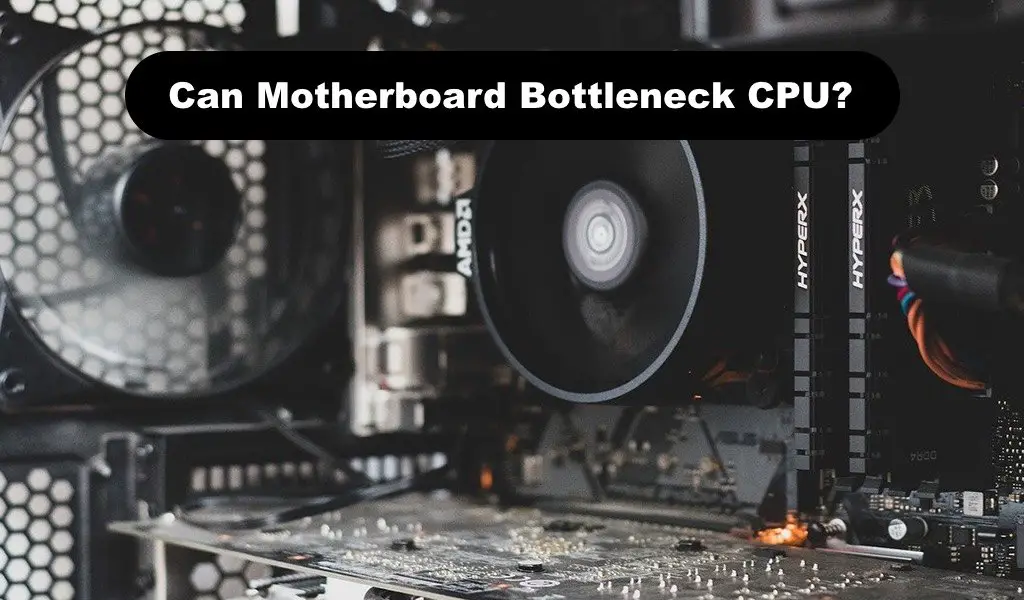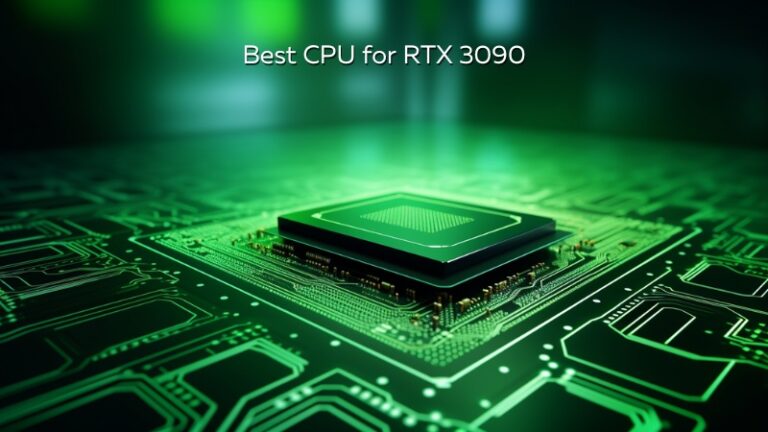Can Motherboard Bottleneck CPU?
Yes, a motherboard can bottleneck a CPU by limiting its performance. A bottleneck occurs when the motherboard cannot fully support the capabilities of the CPU, resulting in reduced overall performance.
The motherboard serves as the foundation of the computer, connecting all the components together and facilitating communication between them.
If the motherboard’s capabilities, such as its chipset or socket, are not compatible or insufficient for the CPU, it can lead to a bottleneck.
This bottleneck can hinder the CPU’s ability to perform at its maximum potential, limiting tasks such as multitasking, gaming, and running resource-intensive applications.
It is essential to ensure that the motherboard is compatible and adequately supports the CPU to avoid any performance limitations.
Understanding The Cpu-Motherboard Relationship
The CPU-motherboard relationship is crucial in a computer system, but can a motherboard bottleneck the CPU?
This article explores this question, providing insights into how the motherboard can potentially limit the performance of the CPU.
Discover the importance of a balanced CPU-Motherboard combination for optimal functionality and performance.
The relationship between the CPU (Central Processing Unit) and the motherboard is crucial to a computer’s overall performance. The motherboard acts as the central hub connecting all the components of the computer, including the CPU.
Let’s explore the role of the motherboard in CPU performance and the key factors that can affect it.
Role Of The Motherboard In CPU Performance
The motherboard plays a vital role in facilitating the performance of the CPU. Here are the key aspects:
- Socket Compatibility: The motherboard determines the type of CPU that can be installed by providing a specific CPU socket. The socket must match the CPU’s architecture and pin configuration to ensure compatibility. A motherboard with an incompatible socket can limit the performance potential of the CPU.
- Power Delivery: The motherboard supplies power to the CPU through the CPU power connector. Adequate power delivery is crucial for the CPU to operate at its full potential. Insufficient power can lead to instability and throttling, negatively impacting performance.
- Bus Speed and Bandwidth: The motherboard acts as a pathway for data transfer between the CPU and other components. It provides various bus interfaces, such as PCI Express and SATA, which affect the data transfer speed and bandwidth. A motherboard with limited bus speed and bandwidth can create bottlenecks, slowing down the CPU’s performance.
- Chipset Features: The motherboard’s chipset plays a significant role in CPU performance. The chipset governs the communication between the CPU and other components, including memory and storage devices. Advanced chipsets provide features like multiple PCIe lanes, faster memory support, and overclocking capabilities, enhancing CPU performance.
- Memory Support: The motherboard determines the type and amount of memory that can be used with the CPU. It provides memory slots and determines the maximum supported memory speed. Inadequate memory support can limit the CPU’s ability to efficiently process data, impacting overall performance.
Key Factors Affecting CPU Performance
Several factors can affect CPU performance beyond the capabilities of the motherboard:
- CPU Architecture: The CPU’s architecture dictates its inherent performance characteristics. Different CPU architectures have varying levels of core count, clock speed, cache sizes, and instruction sets, all of which contribute to overall performance.
- Clock Speed and Cores: The clock speed determines the number of instructions per second that the CPU can execute. Additionally, the number of cores influences the CPU’s multitasking capabilities. Higher clock speeds and more cores generally result in better performance.
- Cache Size: The CPU’s cache is a fast memory storage that stores frequently accessed data. A larger cache size allows the CPU to retrieve data quickly, improving performance for tasks that rely on frequently accessed data.
- Thermal Management: CPU performance can be affected by temperature. Overheating can cause the CPU to throttle its clock speed, slowing down performance to prevent damage. Efficient cooling mechanisms, such as heatsinks and fans, are essential to maintain optimal CPU performance.
- Overclocking Potential: Some CPUs offer overclocking capabilities, allowing users to increase the clock speed beyond the manufacturer’s specifications. However, overclocking can increase power consumption, generate more heat, and potentially shorten the CPU’s lifespan if not done properly.
Understanding the CPU-motherboard relationship and the key factors affecting CPU performance is crucial for maximizing a computer’s capabilities.
By ensuring compatibility, providing adequate power delivery, optimizing data transfer, and considering CPU-specific factors, you can effectively enhance CPU performance within the constraints of the motherboard and the overall system.
Compatibility Considerations
Motherboard compatibility is an important consideration when it comes to preventing CPU bottlenecks.
Ensuring the right match between the CPU and motherboard can greatly optimize performance and avoid potential limitations.
Motherboard bottleneck is a term commonly used to describe a situation where the performance of the CPU is limited by the capabilities of the motherboard.
To ensure optimal compatibility and maximize your system’s potential, it’s important to consider several key factors when choosing a motherboard for your CPU.
Socket Type And CPU Compatibility
- Socket type refers to the physical connection between the CPU and the motherboard. It is crucial to select a motherboard with a socket that matches your CPU’s socket type. Here are some common socket types and their corresponding CPU compatibility:
- LGA 1151: Compatible with various Intel 8th and 9th generation CPUs.
- AM4: Compatible with AMD Ryzen processors.
- LGA 1200: Designed for Intel 10th generation CPUs.
- TR4: Used for high-end AMD Threadripper CPUs.
- It’s essential to check the motherboard’s specification sheet to verify CPU compatibility. Some motherboards may require BIOS updates to support newer processors. Without the required updates, your CPU may not function properly or may not be recognized by the motherboard.
Chipset Selection And CPU Support
- The chipset on a motherboard manages the communication between the CPU and other components. Different chipsets offer varying levels of performance and features. Here are a few popular chipsets and their corresponding CPU support:
- Z390: Designed for high-performance Intel CPUs.
- B450: Suitable for mid-range AMD processors.
- X570: Provides compatibility for high-end AMD Ryzen CPUs.
- To avoid CPU bottlenecks, it’s crucial to choose a motherboard with a chipset that is compatible with the performance level of your CPU. While some lower-end chipsets may work, they could limit your CPU’s full potential and may not support certain advanced features.
Bios Updates For Newer Cpus
- Newer CPUs often require BIOS updates to ensure proper compatibility and functionality. These updates provide the necessary firmware to recognize and optimize the performance of the CPU. Before purchasing a motherboard, check if it supports the CPU you intend to use and if any BIOS updates are required.
- It’s important to note that not all motherboards can be updated to support newer CPUs. In such cases, you may need to consider purchasing a motherboard specifically designed for the CPU generation you have in mind. Refer to the motherboard manufacturer’s website or user manual for instructions on updating the BIOS.
By carefully considering socket type and CPU compatibility, selecting the appropriate chipset, and keeping BIOS updates in mind, you can avoid a motherboard bottleneck and ensure smooth CPU performance.
Take the time to research and choose a motherboard that complements your CPU to maximize your overall system performance.
Power Delivery And Thermal Design
The power delivery and thermal design of a motherboard can potentially act as a bottleneck for the CPU’s performance.
It is essential to ensure that the motherboard is equipped with adequate power delivery systems and efficient thermal management solutions to prevent any potential limitations for the CPU.
Motherboards play a crucial role in the overall performance of your computer system, and understanding how they can affect the CPU is essential.
In this section, we will explore the impact of power delivery and thermal design on a motherboard and its connected CPU.
Vrm (Voltage Regulator Module) Considerations:
- The VRM is responsible for delivering the necessary power to the CPU, ensuring stable and efficient operation. Here are some key considerations regarding VRM design:
- VRM phases: A higher number of power phases indicates better power delivery and more stable CPU performance.
- Power efficiency: Look for motherboards with high-quality VRM components to minimize power loss and reduce VRM temperature.
- VRM cooling: Adequate cooling is crucial for maintaining stable power delivery. Look for motherboards with heatsinks or heat pipes on their VRM components to prevent overheating.
Cooling Solutions For Optimal CPU Performance:
- Effective cooling solutions are vital for proper CPU performance, as excessive heat can negatively impact the CPU’s lifespan and overall stability. Here are some cooling options to consider:
- CPU coolers: Choose a high-quality air or liquid CPU cooler that matches your CPU’s cooling needs to ensure optimal temperature control.
- Case airflow: Proper case ventilation helps dissipate heat from the CPU and other components. Consider adding case fans or opting for a case with good airflow design.
- Thermal paste: Applying a good-quality thermal paste between the CPU and its cooler enhances heat transfer, leading to better cooling efficiency.
Overclocking Potential And Motherboard Quality:
- Overclocking allows users to push their CPUs beyond their stock settings for enhanced performance. The quality of your motherboard can play a significant role in achieving stable overclocks. Consider the following factors:
- Power delivery: A robust power delivery system with high-quality VRMs is crucial for stable overclocking and preventing CPU throttling.
- BIOS options: Motherboards with comprehensive BIOS settings offer more control over voltage, frequency, and other crucial parameters, facilitating successful overclocking.
- Build quality: Opt for motherboards from reputable manufacturers known for their quality components to ensure longevity and reliability when overclocking.
By considering power delivery and thermal design aspects, you can choose a motherboard that is optimized for your CPU’s performance, ensuring efficient operation, stable power delivery, and adequate cooling.
Remember to prioritize these factors when shopping for a new motherboard or planning to push your CPU’s performance to its limits through overclocking.
Bottlenecking And CPU Performance Restriction
Motherboard bottlenecking can restrict CPU performance. This issue occurs when the motherboard’s capabilities limit the CPU’s full potential, hindering overall system performance.
Understanding this can help in optimizing computer performance.
Motherboard
Bottlenecking is a term often used to describe a situation where one component of a computer system restricts the performance of another component.
In the case of motherboards and CPUs, it is indeed possible for a motherboard to bottleneck the performance of a CPU.
In this section, we will explore the causes and factors of bottlenecking, indicators of a CPU bottleneck, and strategies to mitigate bottlenecking.
Causes And Factors Of Bottlenecking:
- Inadequate power delivery: A motherboard with insufficient power delivery capabilities can limit the performance of a CPU, especially in cases where the CPU requires higher power for demanding tasks.
- Outdated or incompatible chipset: An outdated or incompatible chipset on the motherboard may not fully support the features and capabilities of a newer CPU, leading to performance restrictions.
- Limited memory support: If a motherboard has limited memory support, it may not be able to provide sufficient memory bandwidth to keep up with the CPU’s demands, resulting in performance bottlenecks.
- Bus speed limitations: The bus speed, also known as the front-side bus (FSB) speed, connects the CPU to the rest of the system. If the motherboard’s bus speed is slower than the CPU’s maximum supported speed, it can limit the CPU’s performance.
Indicators Of A Cpu Bottleneck:
- High CPU usage and low GPU usage: When the CPU is unable to keep up with the demands of the system, it may max out its usage while leaving the GPU underutilized.
- Frequent stutters and frame drops in gaming: If the CPU is unable to process game data quickly enough, it can result in stuttering and frame rate drops during gameplay, indicating a potential CPU bottleneck.
- Slow loading times: A CPU bottleneck can cause slower loading times for applications, as the CPU struggles to process the necessary instructions efficiently.
Strategies To Mitigate Bottlenecking:
- Ensure a compatible motherboard: Choosing a motherboard with a chipset that fully supports the CPU’s features and capabilities is essential for avoiding performance restrictions.
- Optimize power delivery: Investing in a motherboard with robust power delivery capabilities can ensure that the CPU receives adequate power, minimizing performance bottlenecks.
- Upgrade memory capacity and speed: If the motherboard has limited memory support, consider upgrading to a motherboard that can handle higher capacity and faster memory, improving overall performance.
- Check bus speed compatibility: To avoid restrictions, select a motherboard with a bus speed that matches or exceeds the maximum supported speed of the CPU.
Understanding the causes and indicators of CPU bottlenecking, as well as employing strategies to mitigate it, can help ensure optimal performance and prevent limitations that may arise from an inadequately matched motherboard and CPU combination.
By addressing these factors, users can optimize their system and make the most of their CPU’s capabilities.
Upgradability And Future Compatibility
Motherboard compatibility and upgradability play a crucial role in avoiding CPU bottlenecks.
Ensuring a compatible and upgradable motherboard allows for efficient CPU performance without hindering its capabilities.
Can Motherboard Bottleneck Cpu?
When it comes to building a powerful gaming or productivity PC, it’s essential to consider the potential bottlenecks that can arise. One such bottleneck is the compatibility between the motherboard and CPU.
In this blog post, we will explore the concept of a motherboard bottlenecking a CPU and delve into the upgradability and future compatibility of motherboards.
Understanding these aspects is crucial in making informed decisions about building or upgrading your system.
Investing In A Versatile Motherboard
A versatile motherboard is a smart investment that ensures future compatibility with CPUs and other components. Here’s why you should consider it:
- Broad CPU support: A motherboard with a wide range of CPU compatibility offers flexibility for future upgrades. Look for motherboards that support various socket types and generations.
- Expandability options: Having additional PCIe slots and RAM slots allows you to add more components or upgrade existing ones easily. This ensures better performance and longevity for your system.
- BIOS updates: Regular BIOS updates from motherboard manufacturers can provide compatibility for newer CPU models. Investing in a motherboard from reliable brands ensures continued support and compatibility in the long run.
Considering Future Cpu Upgrades
Upgrading your CPU in the future can significantly enhance your system’s performance. Here are a few important points to keep in mind:
- Research and compatibility: Before upgrading your CPU, check the motherboard manufacturer’s website for compatibility lists and specifications. Ensure that your desired CPU is supported by the motherboard to avoid any compatibility issues.
- Socket compatibility: The CPU socket type is a crucial factor in determining compatibility. If your motherboard supports multiple socket types, you have the flexibility to upgrade to a different socket type in the future.
- Power delivery and VRMs: Consider the power delivery capabilities and VRM (Voltage Regulator Module) design of the motherboard. Upgrading to a more powerful CPU may require a motherboard with robust power delivery for stable performance.
Potential Limitations And Trade-Offs
While motherboard upgradability is beneficial, it’s important to be aware of potential limitations and trade-offs:
- Physical constraints: Motherboard form factors dictate the size and shape of the components that can be installed. Ensure that your desired CPU cooler, graphics card, and other components fit within the chosen motherboard’s form factor.
- Limited BIOS updates: Some older motherboards may stop receiving BIOS updates, making them incompatible with the latest CPU models. Research and choose a motherboard that has a good track record of providing long-term support.
- Budget constraints: Motherboards with extensive upgradability features often come at a higher price. Consider your budget and prioritize the features that are most important for your needs.
Investing in a versatile motherboard and considering future CPU upgrades are crucial aspects of building a high-performance PC.
Doing thorough research, understanding compatibility, and weighing potential limitations will help you make informed decisions.
Remember, a well-equipped motherboard ensures future compatibility and minimizes the chances of a CPU bottleneck.

Credit: tech4gamers.com
FAQs On Can Motherboard Bottleneck CPU
Can A Motherboard Limit A CPU?
Yes, a motherboard can limit a CPU’s performance due to compatibility issues and its technological capabilities.
Can Ram Bottleneck A Cpu?
Yes, RAM can bottleneck a CPU by limiting the amount of data processed at a time.
What Can Bottleneck My Cpu?
CPU can be bottlenecked by factors such as outdated hardware, insufficient cooling, or demanding tasks.
Can A Motherboard Cause Gpu Problems?
Yes, a faulty motherboard can cause issues with the GPU.
Conclusion
Motherboard bottlenecking the CPU is a common concern for PC enthusiasts, but after exploring the topic in depth, it is clear that the impact of motherboard on CPU performance is limited.
While it is true that certain factors like VRM quality, chipset limitations, and outdated BIOS can affect CPU performance, these issues are often exaggerated.
In modern computer systems, motherboards are designed to support a range of CPUs, ensuring compatibility and optimal performance.
Upgrading to the latest generation CPUs may require a compatible motherboard, but this is simply a matter of ensuring the right socket and chipset.
It is important to understand that CPU performance is primarily determined by factors like clock speed, core count, and architecture.
Motherboards, while important, tend to play a more supportive role in the overall system.
So, while a motherboard can impact performance to some extent, it is unlikely to significantly bottleneck a CPU in most cases.
Ultimately, it is crucial to consider the entire system and its components when aiming for optimal performance.






